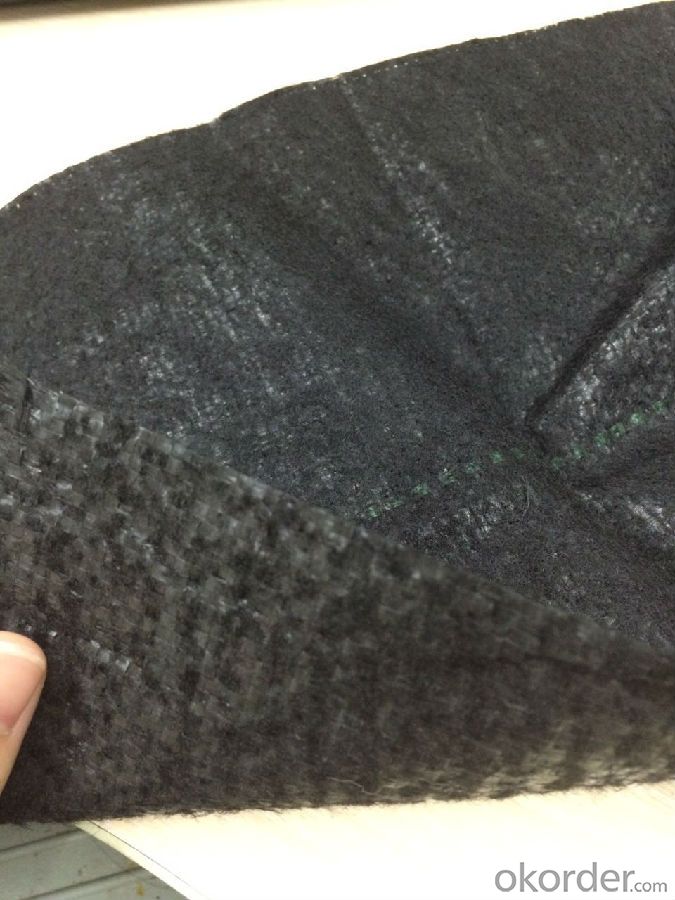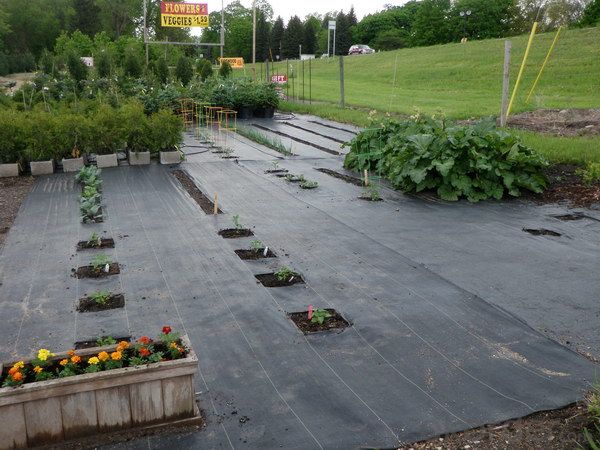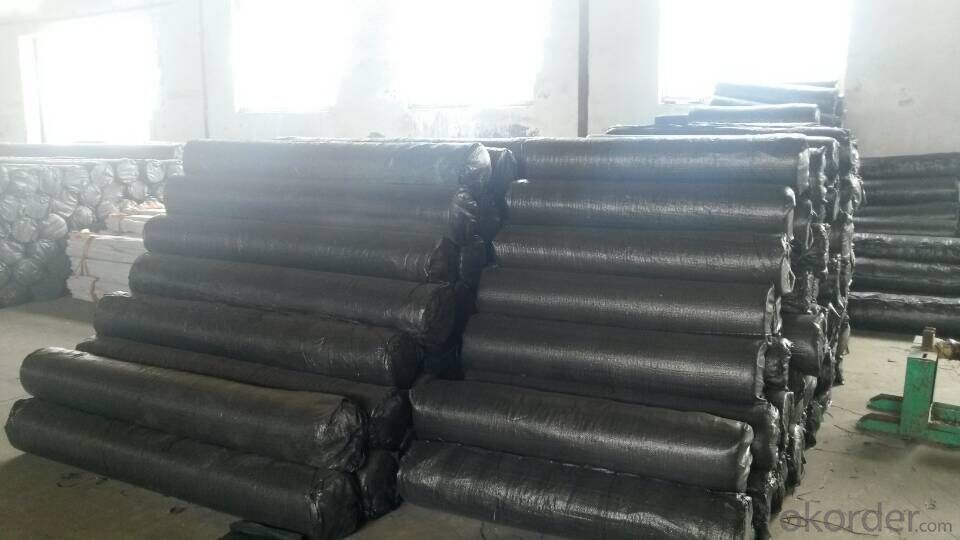Silt Fence/ Polypropylene Fabric/ Weed Barrier Fabric
- Loading Port:
- China main port
- Payment Terms:
- TT or LC
- Min Order Qty:
- 5000 roll
- Supply Capability:
- 100000 roll/month
OKorder Service Pledge
OKorder Financial Service
You Might Also Like
1. Polypropylene Fabric Introduction
Polypropylene fabric is made of environmentally friendly raw materials, pp spunbond nonwoven fabric.
It used to prevent the growth of weed, without the use of potentially dangerous chemical sprays or labor intensive hoeing.
Once installed, weed mat will continue providing protection for years without maintenance.




2. Polypropylene Fabric Feature:
1. Weed suppressant and drainage control landscaping fabric
2. Spun bonded non-woven fabric – will not fray when cut
3. Easy to use
4. Environmentally friendly
5. Allows water, air and nutrients through, suppressing weeds without the use of chemicals
6. Good alternative to Plantex® where cost is a factor
7. UV Stabilised
8. Reduces the level of watering required due to the slower rate of water evaporation
3. Polypropylene Fabric Function:
1. Cover crops in the ground surface,prevent weeds and against the insect
2. Controlling soil humidity and the temperature
3. Does not affect the growth of the crops
4. Protects plants from harmfully solar radiation
5. Air permeability, water permeability help crops growth.
6. Mothproof, eco-friendly, breathable, anti-bacteria, tear-resistant, fusible
4. Polypropylene Fabric Applications:
1. Weed block for landscaped garden beds
2. Permeable liners for planters (stops soil erosion)
3. Weed control under wooden decking
4. Geotextile for separating aggregate / soils under walkway blocks or bricks
5. Assists in preventing paving from settling unevenly
6. Landscape fabric prevents soil erosion
5. FAQ:
Q1: What is your minimum order quantity?
A:The minimum order quantity is 5000 ,but it is negotiable.
Q2:What is your payment terms?
A: T/T,Western Union,Paypal,L/C...
Q3:What is your delivery time?
A:Production time usually costs 2-20 days.
Waiting to cooperate with you!
- Q:What are the factors to consider when designing geotextile-reinforced pavements?
- When designing geotextile-reinforced pavements, several factors need to be taken into consideration. Firstly, the type and properties of the geotextile should be carefully selected based on the specific requirements of the project. This includes considering factors such as the strength, permeability, and durability of the geotextile. Secondly, the design should account for the traffic loads and expected usage of the pavement. This involves calculating the required thickness of the pavement and determining the appropriate geotextile reinforcement spacing and orientation. Additionally, the soil conditions and site characteristics play a crucial role in the design. Factors like soil type, compaction, and drainage conditions should be evaluated to ensure proper stability and performance of the reinforced pavement. Other factors to consider include the climate conditions, environmental impacts, and cost-effectiveness of the design. Overall, a comprehensive analysis of these factors is essential for the successful design of geotextile-reinforced pavements.
- Q:Specification for Lap Length of Geotextile with Two Cloth
- 10 cm or so can be, collar Xiang new materials for your answer
- Q:What are the different geotextile installation techniques in reinforcement?
- There are several different geotextile installation techniques used in reinforcement, including direct placement, wrapping, and sandwiching. Direct placement involves placing the geotextile directly on the ground or subgrade and covering it with soil or aggregate. Wrapping involves wrapping the geotextile around a structure, such as a pipe or retaining wall, to provide additional support. Sandwiching involves placing geotextile layers between layers of soil or aggregate to improve stability and prevent erosion. These techniques are used to enhance the strength and performance of various engineering structures.
- Q:Are geotextiles suitable for use in dam construction?
- Yes, geotextiles are suitable for use in dam construction. They are commonly used as a filter or separation layer to prevent soil erosion, control seepage, and enhance the stability of the dam structure. Geotextiles have proven to be effective in reinforcing soils, improving drainage, and providing long-term durability, making them a valuable component in dam construction projects.
- Q:What are the different applications of geotextiles in agriculture?
- Geotextiles have various applications in agriculture, including erosion control, soil stabilization, weed control, and drainage management. They are used in the construction of embankments, terraces, and retaining walls to prevent soil erosion and provide stability. Geotextiles also act as a barrier to weed growth, reducing the need for herbicides and manual weeding. Additionally, they facilitate proper drainage by allowing water to flow through while preventing soil erosion. Overall, geotextiles play a crucial role in enhancing agricultural practices and improving crop yields.
- Q:What are the environmental impacts of using geotextiles?
- Geotextiles can have both positive and negative environmental impacts. On the positive side, they can help prevent soil erosion, improve water quality by filtering pollutants, and promote vegetation growth. Additionally, they can reduce the need for chemical treatments and provide a sustainable alternative to traditional construction materials. However, geotextiles are typically made from synthetic materials like polyester or polypropylene, which are derived from non-renewable resources and can release microplastics into the environment. Moreover, the production and disposal of geotextiles can contribute to greenhouse gas emissions and waste generation. Therefore, careful consideration of the environmental trade-offs is necessary when using geotextiles.
- Q:How to build a good geotextile sales team
- Any industry needs talent, geotextile sales staff do not need a high degree of education, can work hard on the line, I am specializing in the production of geotechnical materials, wish smooth
- Q:How do geotextiles help with soil confinement in erosion control block walls?
- Geotextiles help with soil confinement in erosion control block walls by acting as a barrier that prevents the soil from washing away. These synthetic fabrics are placed between the soil and the block wall, allowing water to drain through but keeping the soil particles intact. This confinement prevents erosion and helps maintain the stability and integrity of the wall.
- Q:How do geotextiles aid in the reduction of settlement-induced cracking?
- Geotextiles aid in the reduction of settlement-induced cracking by providing a stable and reinforced foundation. These materials are often placed beneath the soil or aggregate layers to distribute loads and prevent differential settlement. By improving the overall stability of the ground, geotextiles help minimize the potential for cracking caused by uneven settlement.
- Q:Geotextile geomembrane factory need to record, certificate, inspection report?
- Do not need to see if the time is not your company's chapter to know ah
1. Manufacturer Overview |
|
|---|---|
| Location | |
| Year Established | |
| Annual Output Value | |
| Main Markets | |
| Company Certifications | |
2. Manufacturer Certificates |
|
|---|---|
| a) Certification Name | |
| Range | |
| Reference | |
| Validity Period | |
3. Manufacturer Capability |
|
|---|---|
| a)Trade Capacity | |
| Nearest Port | |
| Export Percentage | |
| No.of Employees in Trade Department | |
| Language Spoken: | |
| b)Factory Information | |
| Factory Size: | |
| No. of Production Lines | |
| Contract Manufacturing | |
| Product Price Range | |
Send your message to us
Silt Fence/ Polypropylene Fabric/ Weed Barrier Fabric
- Loading Port:
- China main port
- Payment Terms:
- TT or LC
- Min Order Qty:
- 5000 roll
- Supply Capability:
- 100000 roll/month
OKorder Service Pledge
OKorder Financial Service
Similar products
New products
Hot products
Related keywords


































